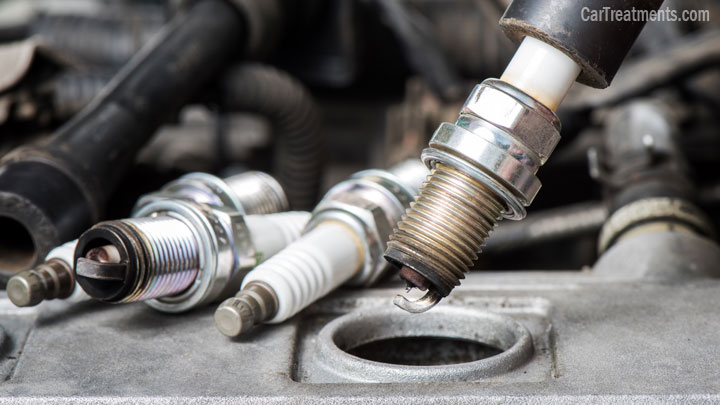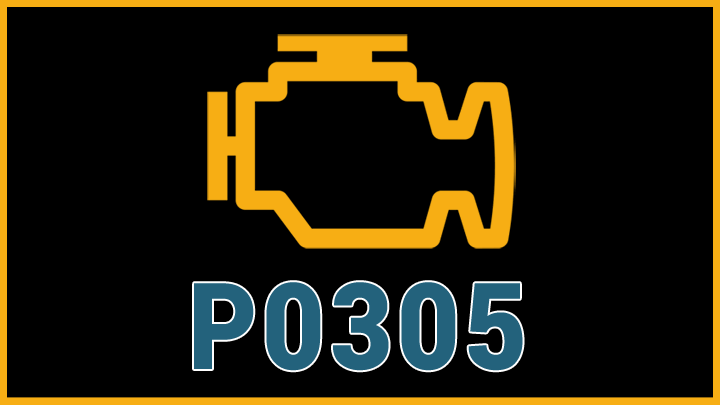Last Updated on November 30, 2022
When you start hearing weird sounds coming from your engine, you need to investigate a little bit further. Especially if your check engine light is on too, but that’s exactly what you can expect to happen if you have a P0305 code.
The good news is that you can usually repair the underlying issue without spending a ton of money and get your car back on the road in no time.
What Does Code P0305 Mean?
The P0305 code is part of a string of codes that can appear when you have a misfire in one of your engine’s cylinders. The last digit of the code tells you the cylinder, and in this case, it’s the fifth cylinder.
To figure out which cylinder is the fifth cylinder in your specific engine, you’ll have to refer to your vehicle’s maintenance manual.
There are multiple reasons that an engine could be misfiring, and there are various ways that it could be doing it. To begin with, the spark plug might be firing at the wrong time. If the timing’s even slightly off, you’ll run into problems.
The spark plug also might not be firing at all, or there might not be enough fuel in the combustion chamber to ignite. While there are many different causes, the end result is the same, that cylinder isn’t working the way that it should.
Related: P0300, P0301, P0302, P0303, P0304, P0306, P0307, P0308
Symptoms of Code P0305

While you might not notice any of the following symptoms, that doesn’t mean that there isn’t an underlying problem. Engine misfires vary in their severity, and the worse the misfire, the more noticeable it will be.
However, that doesn’t mean that you can just ignore the code. Even small misfires can turn into big problems if you ignore them.
- Rough Sounding Engine – There is a potential for engine hesitation or jerking when accelerating
- Performance Problems – Especially while accelerating
- Decrease in Fuel Economy – You’ll be stopping at the gas station more frequently
Causes of Code P0305
While the most common cause of a P0305 is worn-out spark plugs, that isn’t the only potential concern. But because worn-out spark plugs are by far the most common problem and are cheap and easy to replace, always start there before diving into more serious issues.
- Worn out spark plugs
- Worn out spark plug wires or distributor cap and rotor
- Incorrect timing
- Vacuum leak
- Low or weak fuel pressure
- Fault in the EGR system (ie: EGR valve)
- Defective speed sensor
- Underlying mechanical problems
Is Code P0305 Serious?
Anytime your engine is misfiring, it’s a serious concern. Your engine produces a lot of power, and all of that power comes from the combustion chamber and the cylinders. A misfire means that one of the explosions inside your engine is happening at the wrong time.
This puts a lot of pressure on various components throughout your engine as it deals with errant explosions. When everything is working the way it should, all the force generated by those explosions has somewhere to go by pushing the piston down.
When you have a misfire, that isn’t always the case, but that energy needs to go somewhere. The force of the energy trying to escape the combustion chamber can lead to more damages and expensive repairs.
How to Fix

The first thing you should do when you have a P0305 code is to check the spark plugs. Spark plugs are cheap enough that you should consider replacing them no matter what, just to be on the safe side. From there, you need to check out the ignition wires and the distributor cap or rotor.
Newer vehicles don’t always have a distributor, and if that’s the case, you can rule that out. After that, you need to check the timing. If you’ve just replaced spark plugs and wires, make sure that everything is heading to the right cylinder – the firing order matters quite a bit!
If you’re still having problems after you’ve ruled out the ignition and timing components, you can move onto the less likely problems of defective sensors, fuel pressure, or underlying mechanical issues.
If you don’t know what you’re looking for, these problems can be hard to spot. The easiest to check is the fuel pressure because all you need to do is crack a line while turning the engine over to see if you have fuel coming out.
Just make sure that you don’t introduce any air into the system and then disconnect the starting system while you’re doing this, or you could run into unexpected problems!
After that, the best way to check what’s going on with the rest of the sensors is with a comprehensive scan tool. If you have, one’s that great, but many home mechanics don’t. You’ll likely need to take your vehicle to a shop to figure out what’s going on and how to fix it.




